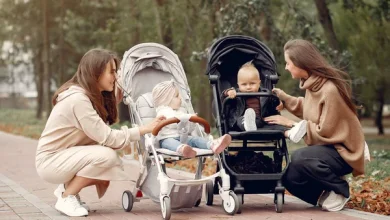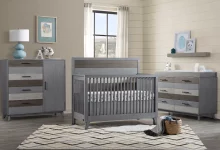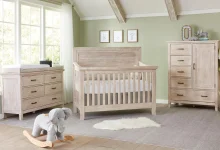Shade Structures for Cars: Comprehensive Guide

In today’s world, protecting our valuable assets is more important than ever. Among these assets, our cars hold significant value, not just in terms of financial investment but also as essential tools for our daily lives. From commuting to work to embarking on weekend getaways, cars play a pivotal role in our routines. However, prolonged exposure to the elements can take a toll on our vehicles, leading to various issues such as paint damage, interior fading, and even mechanical problems. This is where shade structures for cars come into play, offering a practical solution to safeguard our vehicles from the harsh effects of the sun, rain, and other environmental factors.
Shade structures are designed to provide a protective cover for cars, ensuring they remain in optimal condition despite the weather conditions. These structures come in various forms, each catering to different needs and preferences. Whether you have a compact car or a large SUV, there is a shade structure that can offer the protection your vehicle requires. In this comprehensive guide, we will explore the different types of shade structures available, their benefits, installation processes, and much more. By the end of this article, you will have a thorough understanding of how shade structures can enhance the longevity and appearance of your car.
Types of Shade Structures for Cars
Carports
Carports are one of the most common types of shade structures. They consist of a roof supported by posts and provide an open-sided shelter for vehicles. Carports are available in various materials such as metal, wood, and polycarbonate, each offering unique advantages. Metal carports, for instance, are durable and resistant to weather conditions, while wooden carports add a touch of elegance to the property.
Portable Canopies
Portable canopies are a versatile option for those who need temporary shade solutions. These structures are lightweight, easy to assemble, and can be moved from one location to another. They are ideal for events, outdoor gatherings, or for providing temporary shade in your driveway.
Awnings
Awnings are attached to a building and extend outward to create a shaded area. They can be retracted when not in use, making them a convenient option for homes with limited space. Awnings are available in manual or motorized versions, with various fabric choices to match the aesthetic of your property.
Shade Sails
Shade sails are stylish and modern structures that use fabric tensioned between several anchor points. They are highly customizable and can cover large areas, making them perfect for providing shade over multiple vehicles or larger spaces.
Benefits of Shade Structures
Protection from UV Rays
One of the primary benefits of shade structures is their ability to block harmful UV rays from the sun. UV rays can cause significant damage to a car’s exterior paint and interior materials, leading to fading and deterioration over time. By providing a shaded environment, these structures help maintain the aesthetic appeal of your vehicle.
Temperature Regulation
Shade structures also help in regulating the temperature inside your car. By reducing direct sunlight exposure, these structures prevent the interior from becoming excessively hot, which can be uncomfortable and potentially harmful to electronic components and upholstery.
Weather Protection
Beyond sun protection, shade structures offer shelter from other weather conditions such as rain, snow, and hail. This protection is crucial in preventing rust, water damage, and other issues that can arise from prolonged exposure to moisture.
Enhanced Property Value
Installing a shade structure can enhance the value of your property. It not only improves the functionality of your space but also adds to the aesthetic appeal. Potential buyers often see these additions as valuable assets, increasing the overall market value of your home.
Installation Processes
DIY Installation
For those who enjoy hands-on projects, DIY installation of shade structures can be a rewarding experience. Many carport kits and portable canopies come with detailed instructions, allowing you to assemble them with basic tools. This option is cost-effective and offers a sense of accomplishment.
Professional Installation
If you prefer a hassle-free experience, professional installation is the way to go. Experienced installers ensure that the shade structure is securely anchored and properly aligned. This option might be more expensive, but it guarantees a high-quality and durable result.
Maintenance of Shade Structures
Regular Cleaning
Keeping your shade structure clean is essential for its longevity. Regularly remove dirt, debris, and leaves from the roof and supports. For fabric structures, occasional washing with mild soap and water will help maintain their appearance.
Inspection and Repairs
Periodically inspect your shade structure for any signs of wear and tear. Check for rust on metal components, cracks in wooden posts, or tears in fabric. Promptly addressing these issues will prevent further damage and ensure the structure remains safe and functional.
Seasonal Adjustments
Depending on the season, you might need to adjust your shade structure. For example, in winter, removing accumulated snow from the roof will prevent excess weight from causing structural damage. During windy conditions, securing loose parts will ensure stability.
Customization Options
Size and Shape
Shade structures come in various sizes and shapes to suit different needs. Whether you need a compact structure for a single car or a large one for multiple vehicles, customization options are available. Additionally, you can choose from different roof designs, such as flat, gabled, or curved.
Material Choices
The material of your shade structure can significantly impact its durability and appearance. Metal structures, such as aluminum or steel, are robust and long-lasting. Wooden structures offer a classic look but require more maintenance. Fabric options, like UV-resistant polyester, provide flexibility and style.
Color Options
Many shade structures offer a range of color options to match your property’s aesthetic. From neutral tones to vibrant hues, you can select a color that complements your home’s exterior and adds visual appeal to your outdoor space.
Eco-Friendly Shade Structures
Solar-Powered Options
For environmentally conscious homeowners, solar-powered shade structures are an excellent choice. These structures integrate solar panels into the roof, generating electricity that can be used to power lights or charge electric vehicles. This not only reduces your carbon footprint but also lowers energy costs.
Sustainable Materials
Choosing sustainable materials for your shade structure is another way to minimize environmental impact. Opt for recycled metal, responsibly sourced wood, or eco-friendly fabric to create a structure that aligns with your green values.
Enhancing Aesthetic Appeal
Architectural Styles
Shade structures can be designed to complement various architectural styles. Whether your home has a modern, traditional, or rustic look, there is a shade structure that can enhance its appearance. Consider elements like roof design, material choice, and color to create a cohesive look.
Landscaping Integration
Integrating your shade structure with the surrounding landscape can create a harmonious outdoor space. Planting trees or shrubs around the structure can provide additional shade and privacy. Additionally, incorporating hardscaping elements like pavers or stone pathways can enhance the overall aesthetic.
Cost Considerations
Initial Investment
The cost of shade structures varies widely based on size, material, and customization options. Simple portable canopies can be quite affordable, while large, custom-built carports can be a significant investment. It’s essential to consider your budget and the level of protection you need when making a decision.
Long-Term Savings
While the initial investment in a shade structure might seem high, it can lead to long-term savings. By protecting your car from the elements, you reduce the need for costly repairs and maintenance. Additionally, shade structures can increase the lifespan of your vehicle, providing better value over time.
Legal and Zoning Considerations
Permits and Regulations
Before installing a shade structure, it’s crucial to check local building codes and zoning regulations. Some areas require permits for certain types of structures, and there may be restrictions on size, height, and location. Ensuring compliance with these regulations will prevent potential legal issues.
Homeowner Association Rules
If you live in a community with a homeowner association (HOA), you’ll need to review their rules and guidelines. HOAs often have specific requirements for external structures, and obtaining approval before installation is essential.
DIY Projects and Creativity
Building from Scratch
For the adventurous DIY enthusiast, building a shade structure from scratch can be a fulfilling project. This option allows for complete customization and the opportunity to use creative design elements. However, it requires advanced carpentry skills and a thorough understanding of structural integrity.
Upcycling Materials
Upcycling materials for your shade structure is an eco-friendly and cost-effective approach. Using reclaimed wood, repurposed metal, or salvaged fabric can create a unique and sustainable structure. This method also adds character and a personal touch to your outdoor space.
Commercial Applications
Parking Lot Shade
Shade structures are not limited to residential use. They are increasingly popular in commercial settings, such as parking lots. Providing shaded parking spaces enhances customer comfort and protects vehicles, making it a valuable addition for businesses.
Car Dealerships
Car dealerships can benefit significantly from shade structures. By protecting their inventory from sun damage and weather conditions, dealerships can maintain the pristine condition of their vehicles, which is crucial for attracting buyers.
Event Venues
Event venues, such as outdoor arenas and fairgrounds, often utilize shade structures to create comfortable spaces for attendees. These structures provide shelter from the sun and rain, enhancing the overall experience for guests.
Innovation in Shade Structures
Automated Systems
The advent of smart technology has led to the development of automated shade structures. These systems can be controlled via smartphone apps, allowing users to adjust the position of awnings or retractable roofs with ease. Automated systems offer convenience and enhanced functionality.
Modular Designs
Modular shade structures are designed for flexibility and scalability. They can be expanded or reconfigured to accommodate changing needs. This innovation is particularly beneficial for growing families or businesses with fluctuating requirements.
Durability and Longevity
Material Durability
The durability of a shade structure largely depends on the materials used. Metal structures, especially those made from galvanized steel or aluminum, are highly resistant to rust and corrosion. Wooden structures, when treated properly, can withstand various weather








